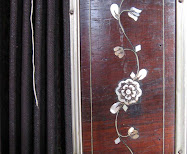It's something I've heard several times over the years: "I love tango, but I don't like tango music."
Call it a failure of imagination on my part, if you like, but I just don't understand it.
I'd be lying if I said that I took to classic tango music immediately. It's an older style all around, the instruments may be unfamiliar, the recordings are old, and sometimes it is strange to the modern ear, accustomed as we may be to highly polished digital production values. At the first class I ever took, I did not expect the music I heard--and throughout the
course, I kept anticipating that the teachers might play something else
at some point, something more like I'd heard in movies and in
choreographed dance routines. But it did not take long to start feeling how music and movement went together--credit to my teachers for introducing musicality concepts so early--and now they seem inseparable, two sides of the same coin.
Dancing tango (or "tango") to other music doesn't feel right to me, in a way that I don't have the vocabulary to describe. And when I'm listening to tango music, I can imagine the dance that one could build to the song. Sometimes I can almost feel it in my body: dainty little pizzicato steps here, the swoop of a turn there, the anticipation of suspension in this drawn-out note, and now the release. How would I embellish this part with subtle footplay, if given the chance by a sensitive partner? And always, the music evokes the warm memory of the embrace.
They evolved together, the music and the dance; can they really be separated?
Ageing in Tango
-
The last months were just crazy, so I've not a lot of time to write here,
but I gave an interview about ageing in tango from my perspective.
Check it out...
4 hours ago





